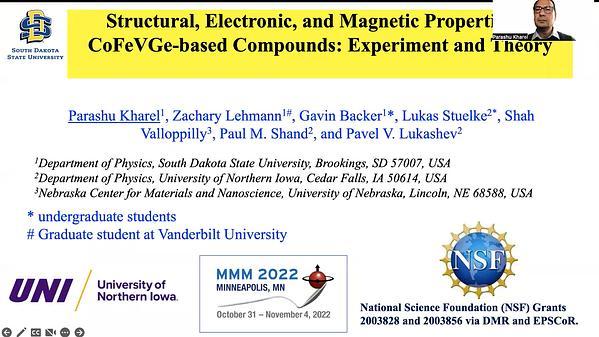Would you like to see your presentation here, made available to a global audience of researchers?
Add your own presentation or have us affordably record your next conference.
Fabrication of nanostructures can be categorized into top-down and bottom-up approaches. The top-down approach uses various kinds of lithography, which has
unprecedented accuracy and controllability, yet requires sophisticated equipment and expensive operating costs. On the other hand, the bottom-up approaches are cost-efficient and do not
rely on sophisticated facilities. However, it is determined by self-organization, which lacks strict repeatability and spatial homogeneity over a long distance. Here, we report an
unprecedented electrochemical growth of ordered metallic nanowire arrays from an ultrathin electrolyte layer, which is achieved by solidifying the electrolyte solution below the freezing
temperature. We apply the electric voltage pulses across two straight, parallel electrodes. The thickness of the electrodeposit is instantaneously tunable by the applied electric pulses,
leading to parallel ridges on webbed film without using any template. An array of metallic nanowires with desired separation and width determined by the applied pulses is formed on the
substrate with arbitrary surface patterns by etching away the webbed film thereafter. Unlike conventional nanowires growing along their longitudinal axial direction, here the whole
nanowire simultaneously develops in the direction perpendicular to the wire axis. Besides, the nanowires can be fabricated on a surface with any topography, including silicon grating with
a high–aspect ratio surface pattern. This work1 demonstrates a previously unrecognized fabrication strategy that bridges the gap of top-down lithography and bottom-up self-organization
in making ordered metallic nanowire arrays over a large area with low cost.
References:
1. F. Chen, Z. Yang, J.-N. Li, F. Jia, F. Wang, D. Zhao, R.-W. Peng, M. Wang, Science Advances., Vol 8, p. eabk0180 (2022)
